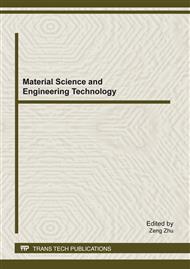p.191
p.194
p.201
p.209
p.215
p.221
p.225
p.235
p.242
Numerical Simulation Analysis on Residential Building Indoor Thermal Environment of Intermittent Heating in Lhasa Based on DeST
Abstract:
The aim of this paper is to analyze whether the intermittent heating mode is feasible for residential buildings in Lhasa, the thermal parameters of each palisade structure and the influence law of intermittent heating mode on the indoor thermal environment. In this paper, the DeST energy consumption simulation software that is compiled by Tsinghua University was used to simulate and analyze a residential building in Lhasa city. The results show that: It is completely feasible to carry out intermittent heating in Lhasa area. Considering the indoor temperature reduction should not be too large during intermittent heating break, it is recommended to adopt external insulation. Compared with continuous heating mode, heating open 8 hours and 12 hours a day can save energy 24% and 39% respectively. The results can provide evidences for intermittent heating operating control and energy- saving.
Info:
Periodical:
Pages:
215-220
Citation:
Online since:
February 2012
Authors:
Keywords:
Price:
Сopyright:
© 2012 Trans Tech Publications Ltd. All Rights Reserved
Share:
Citation:


